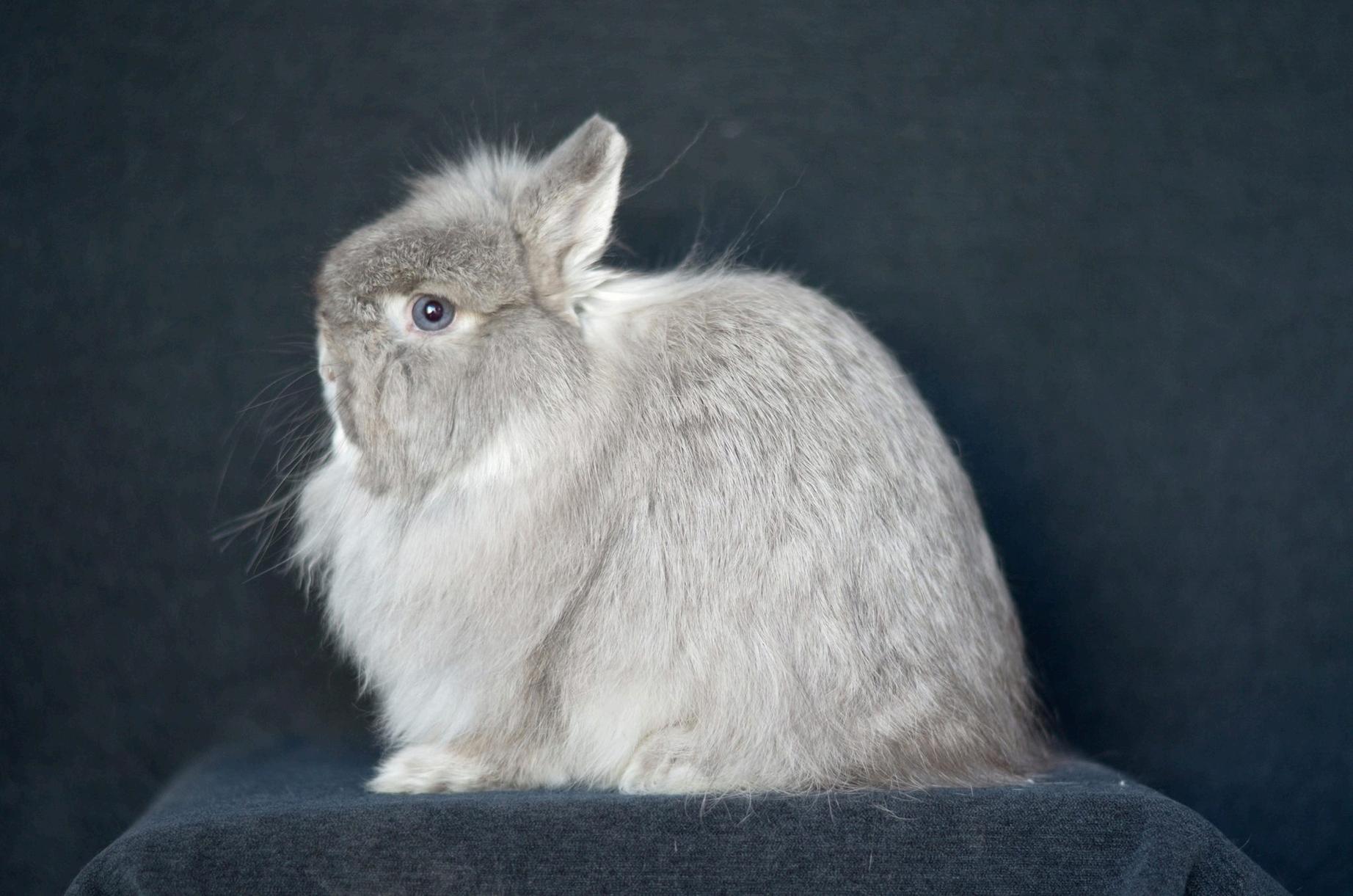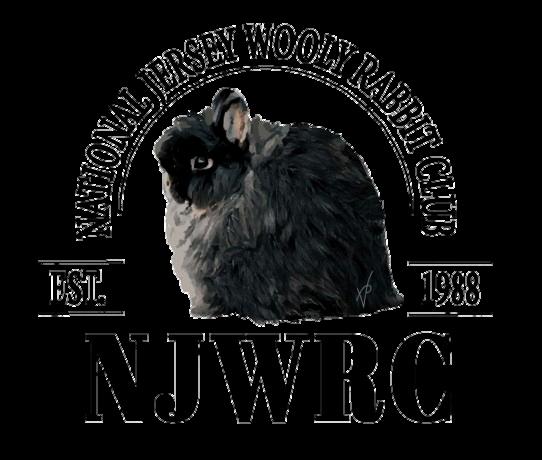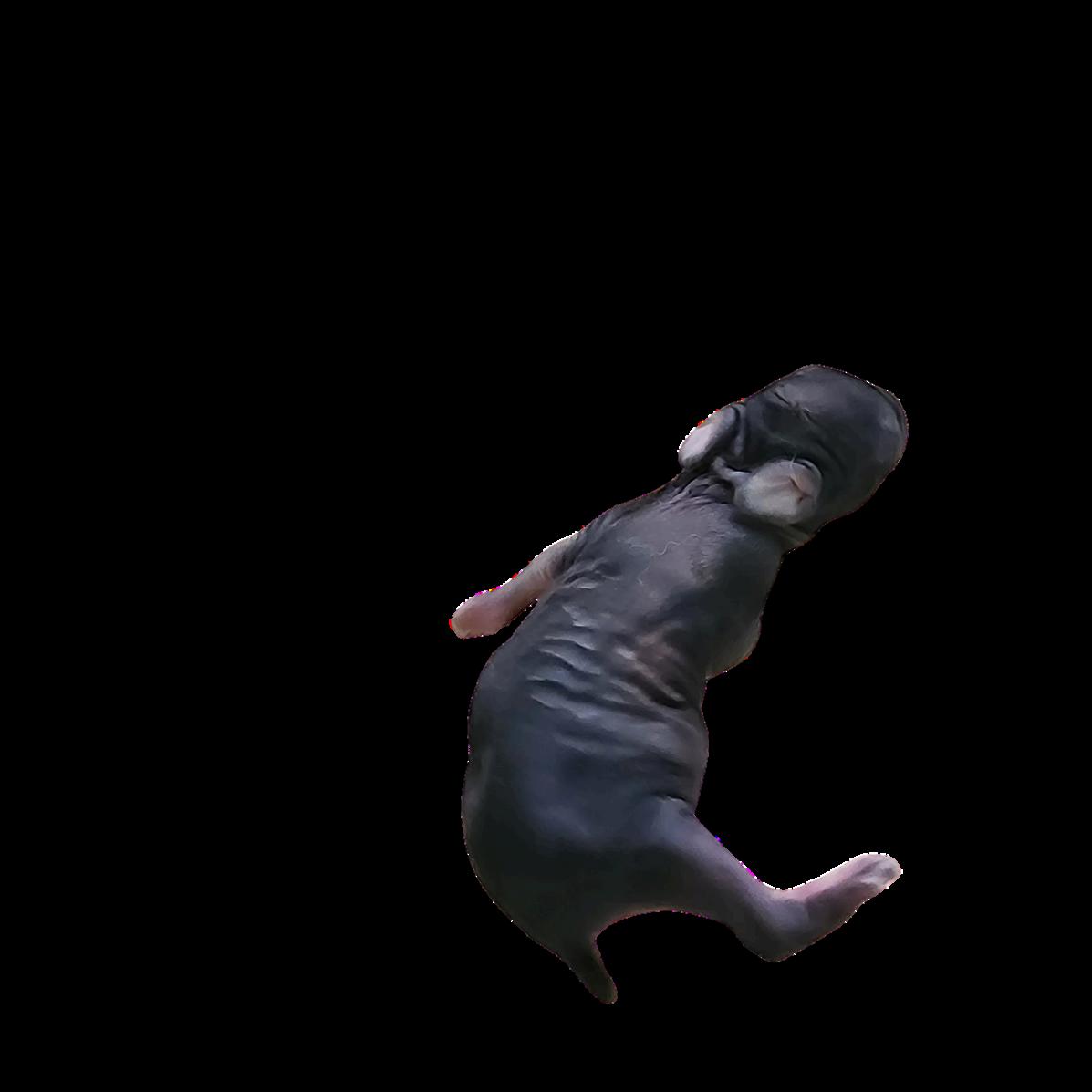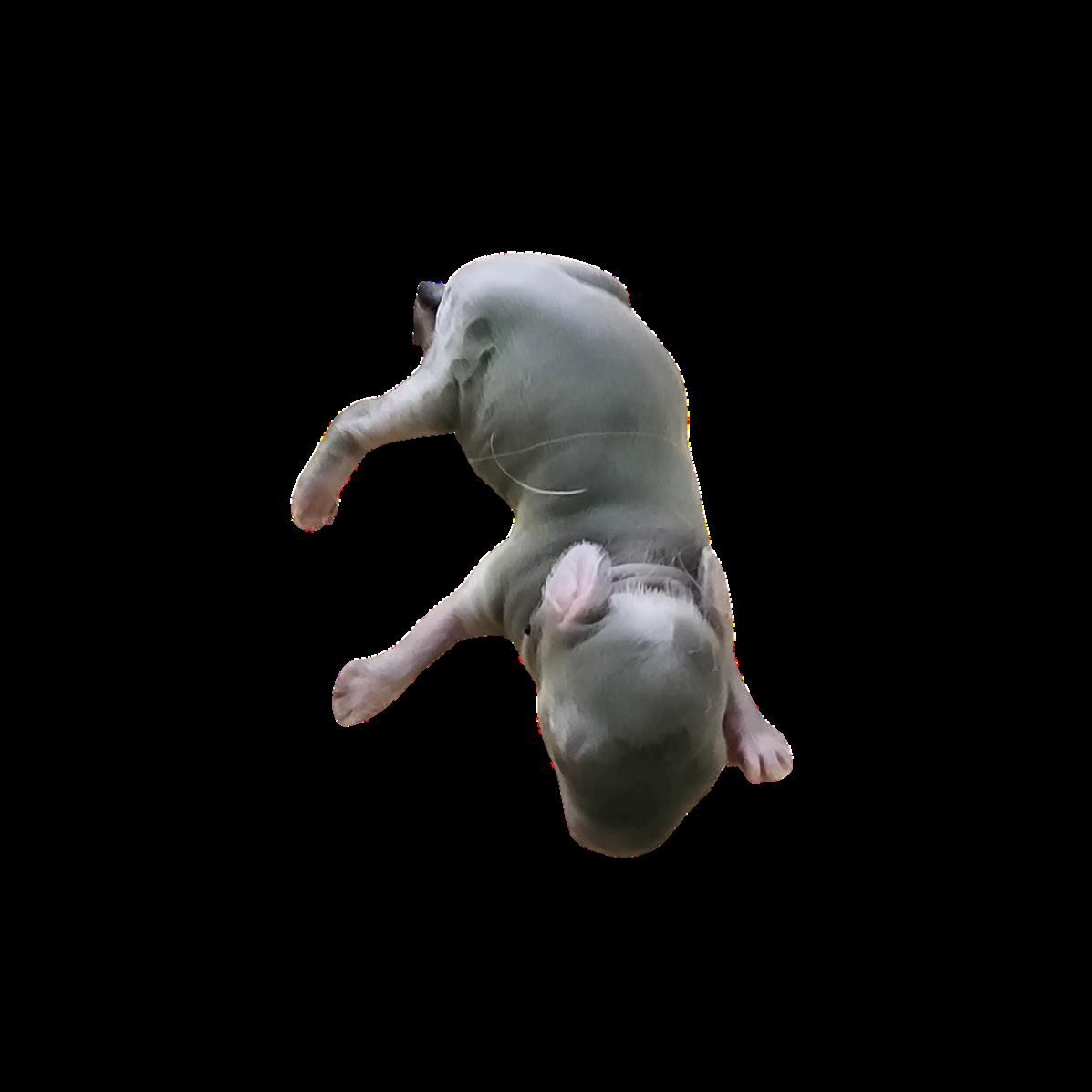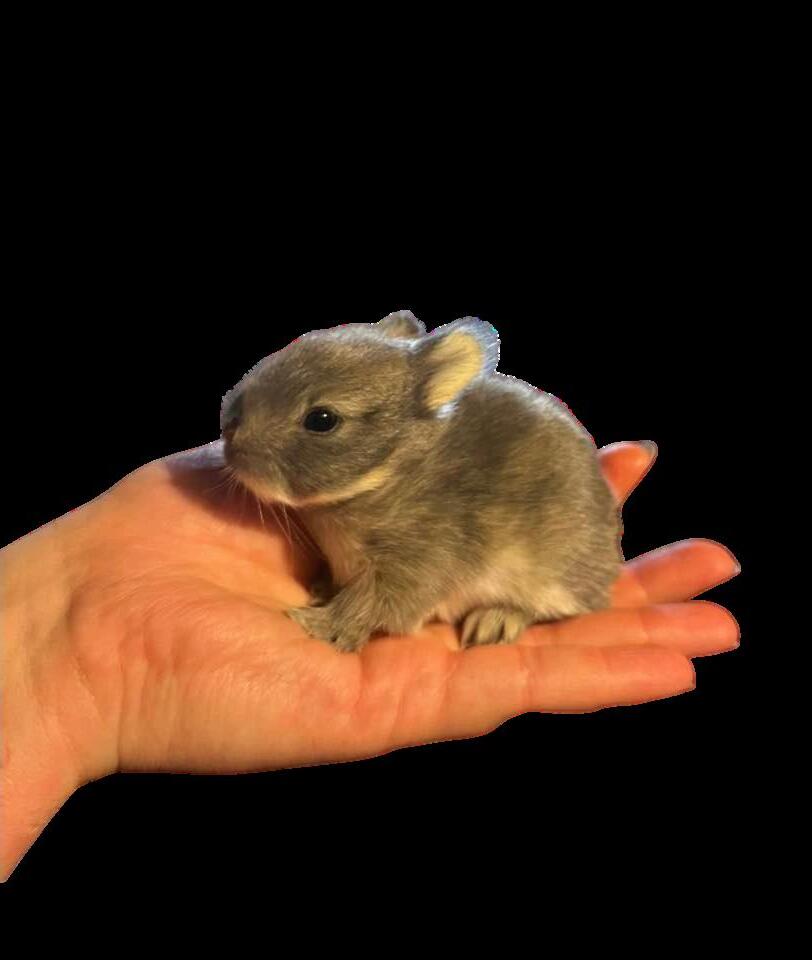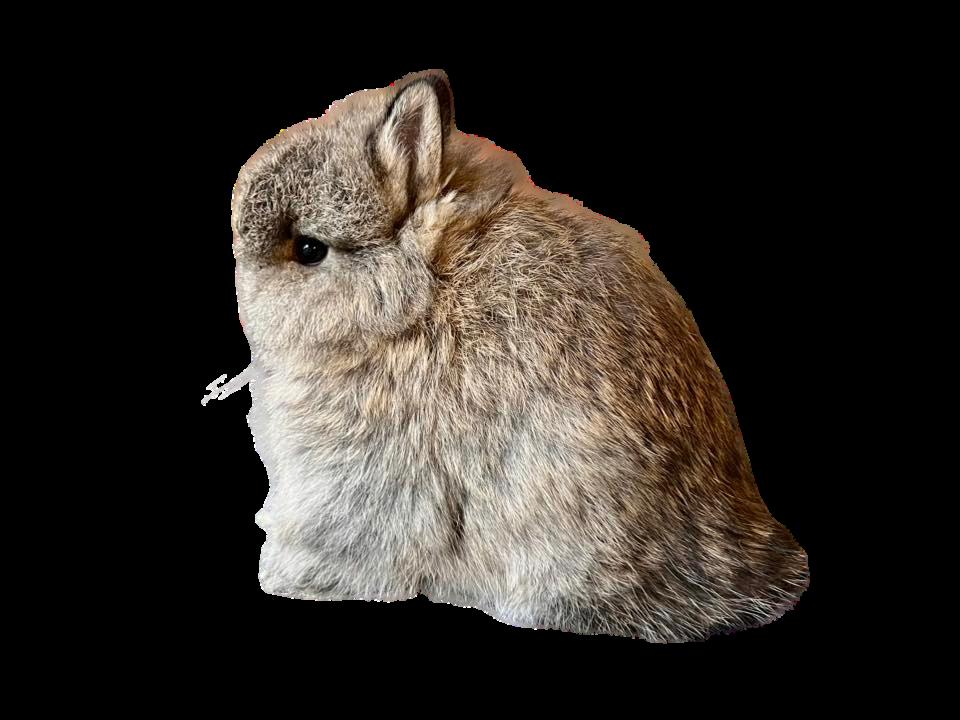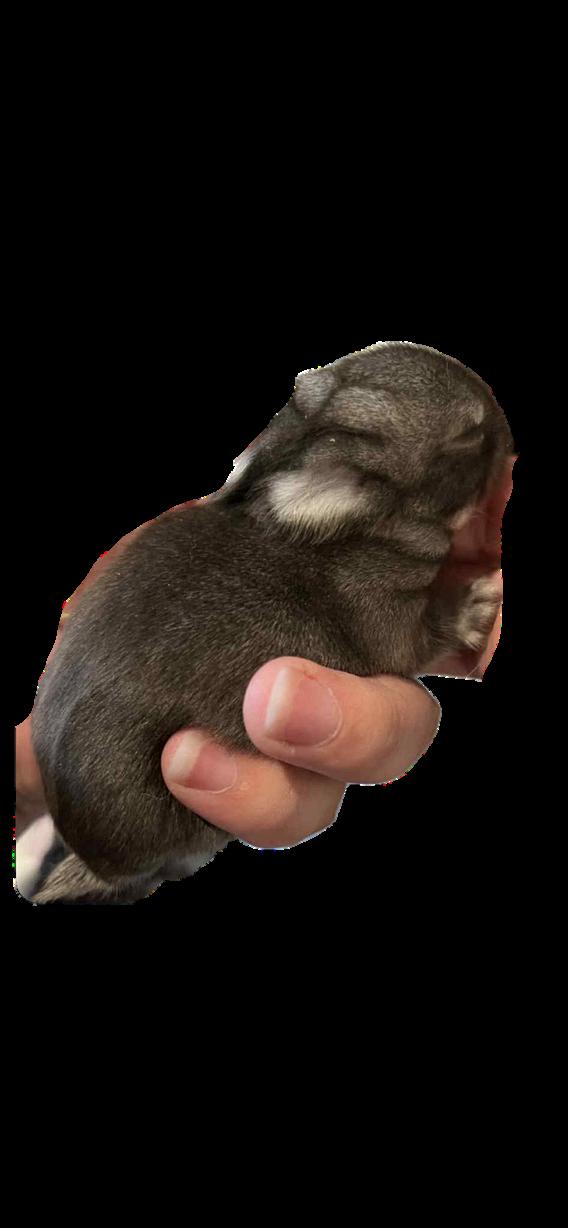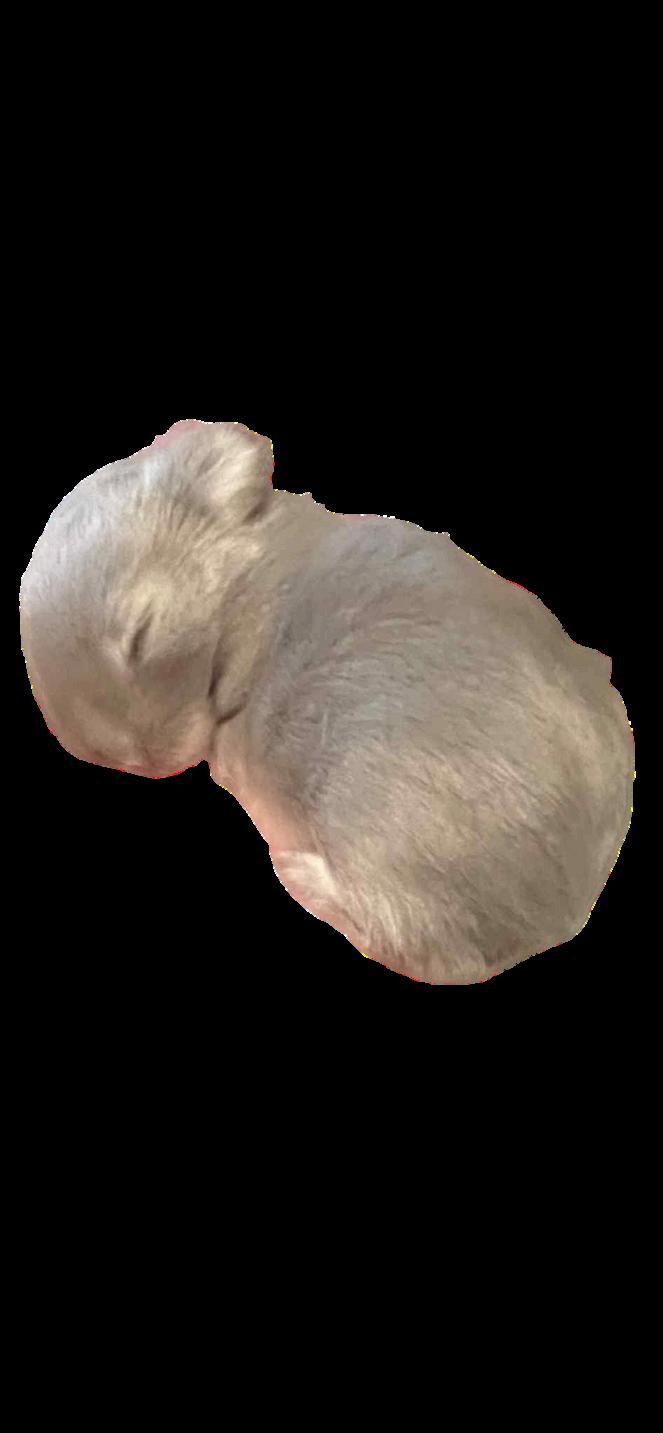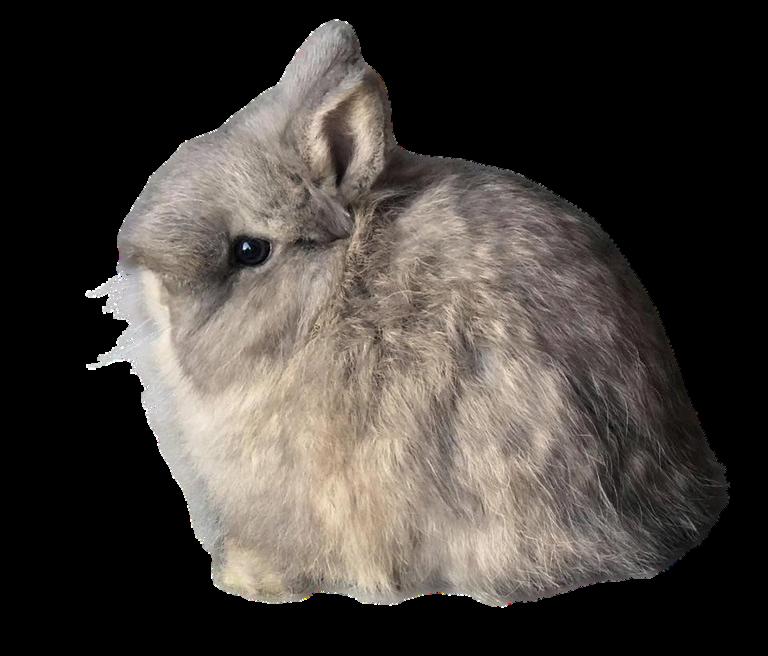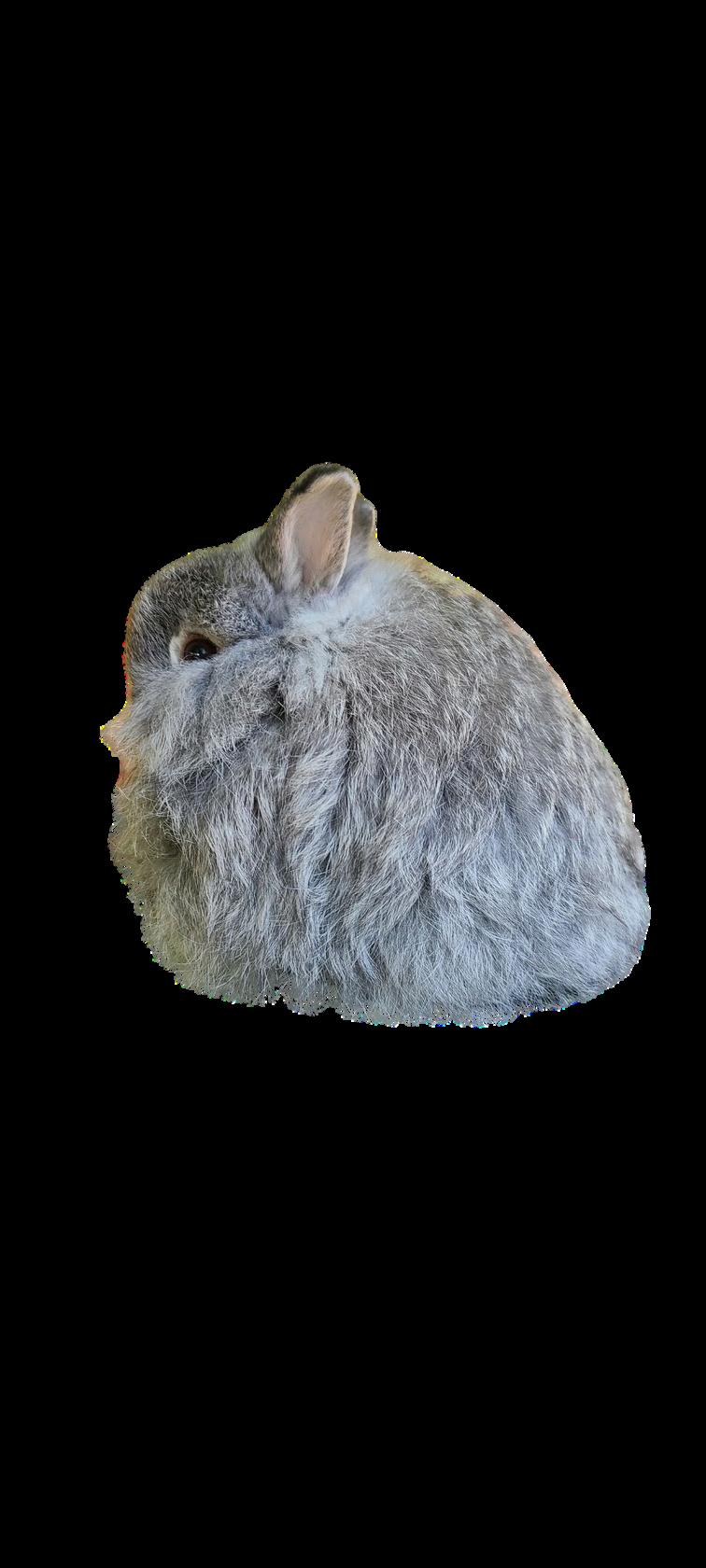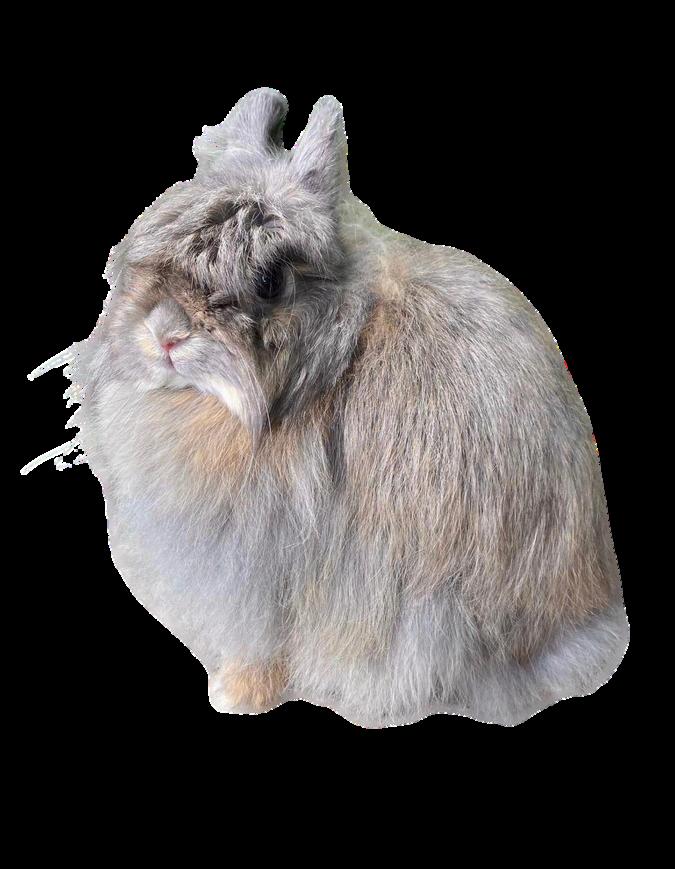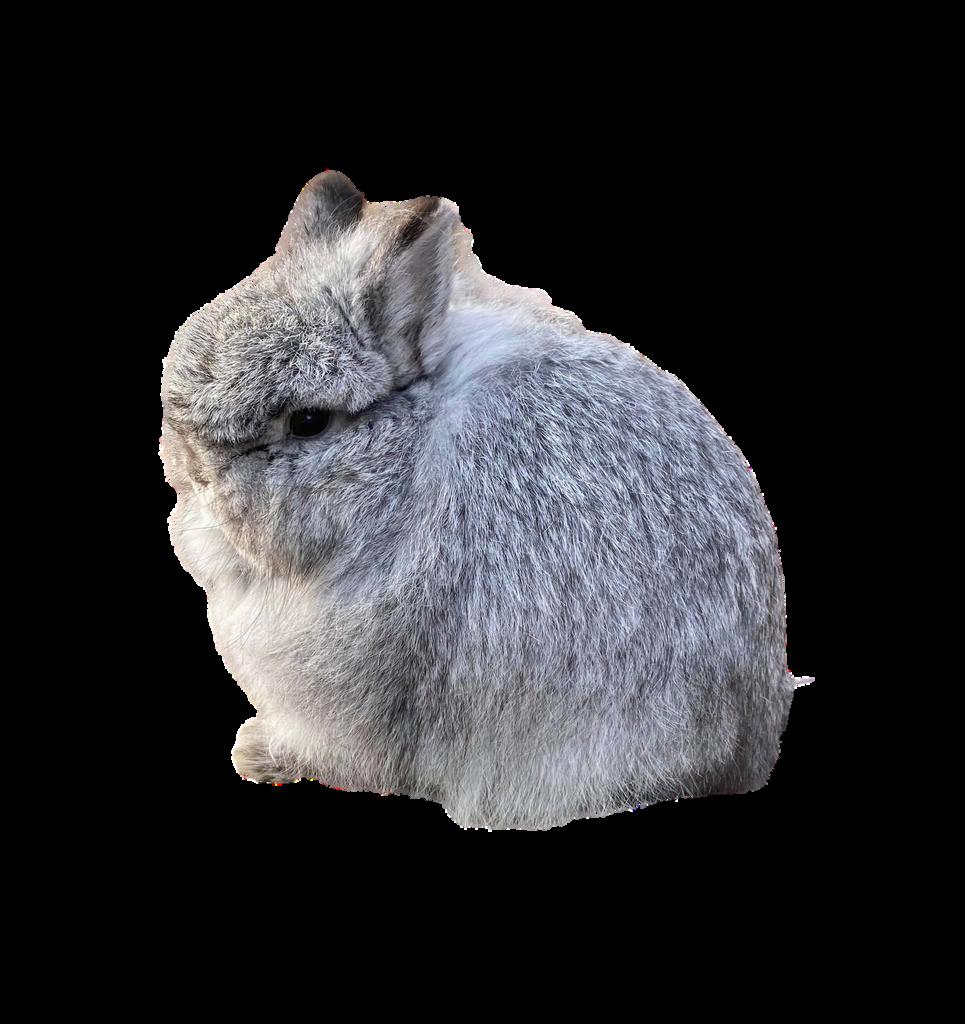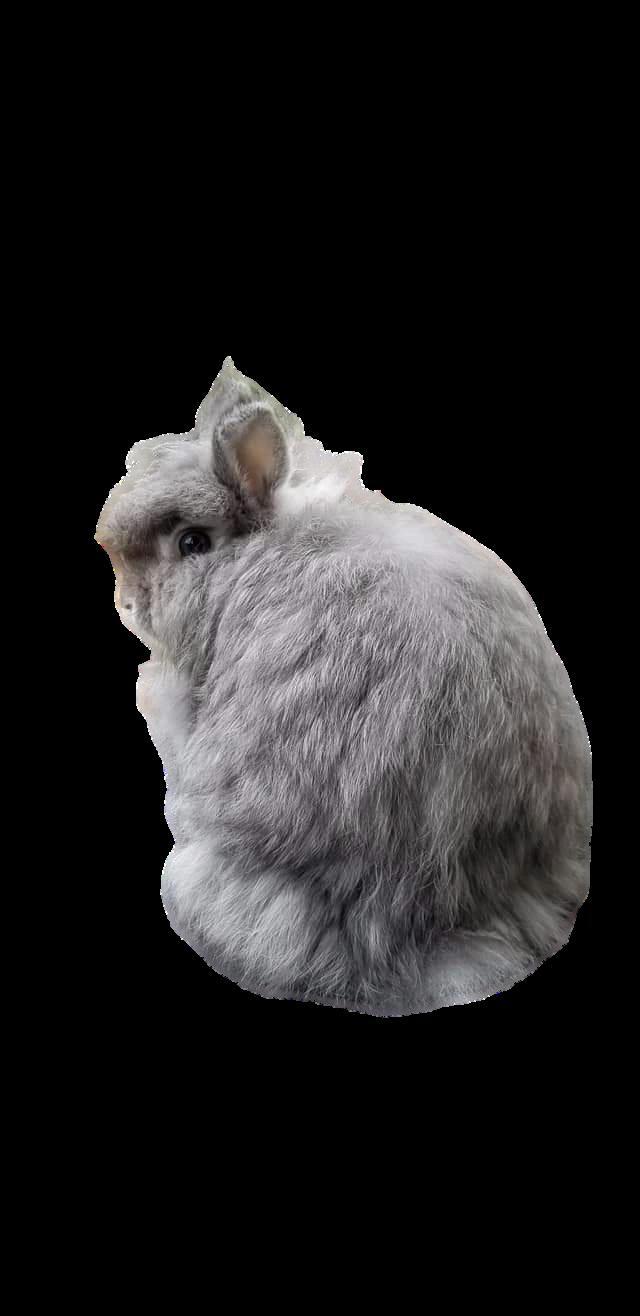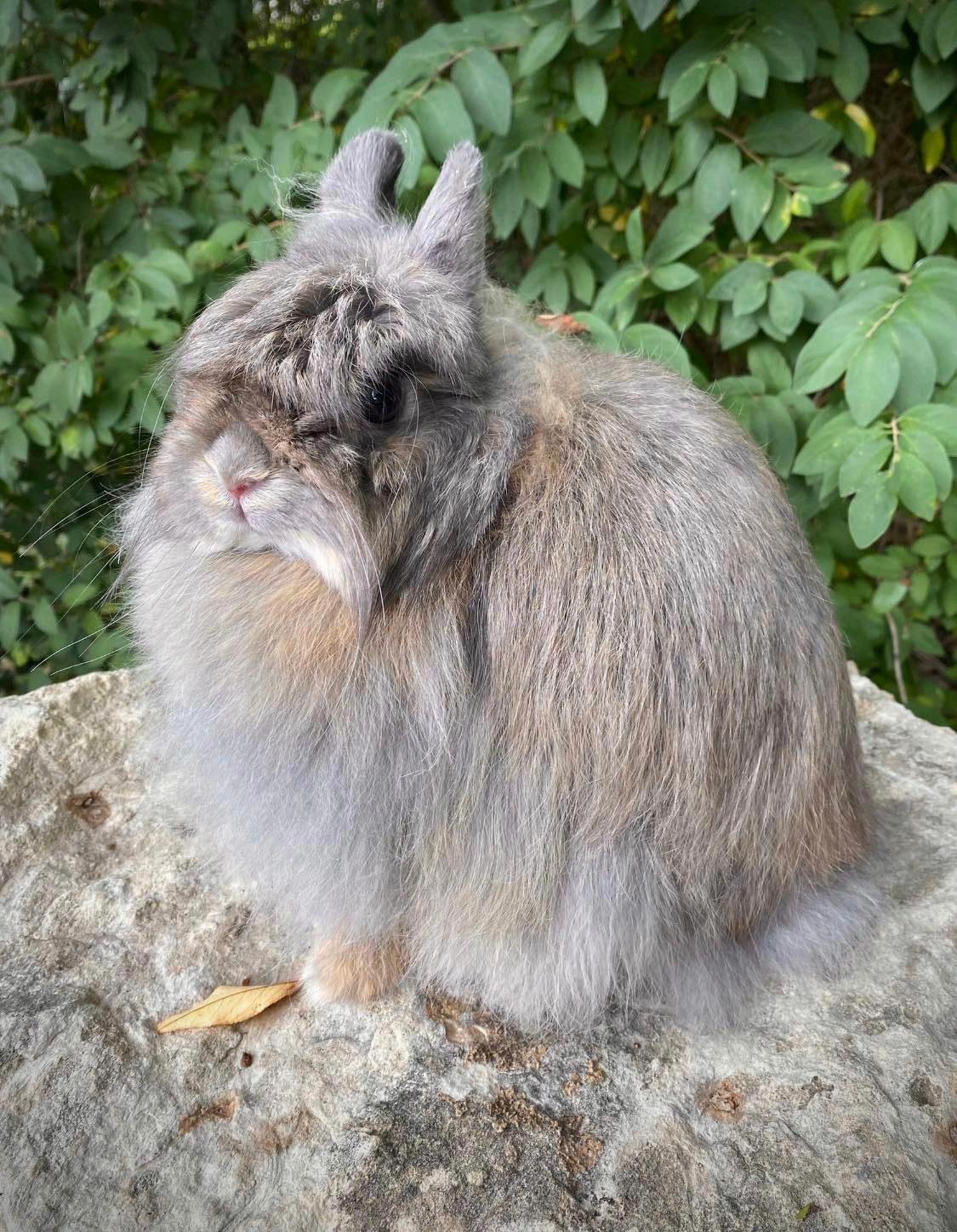
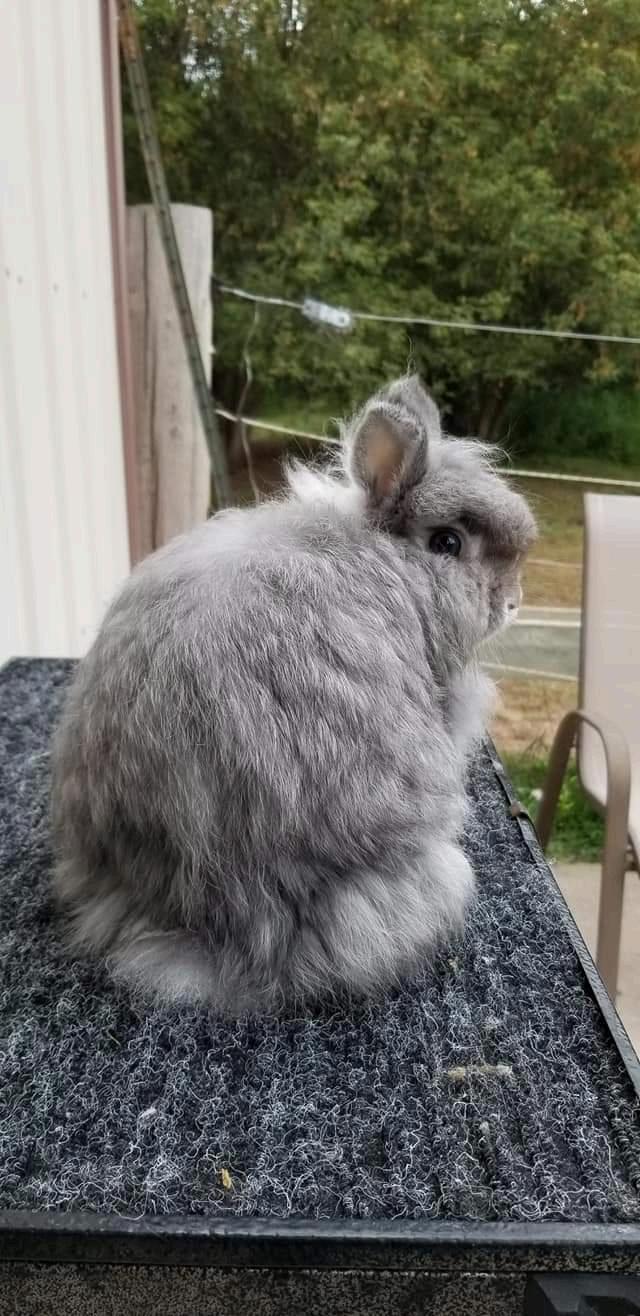
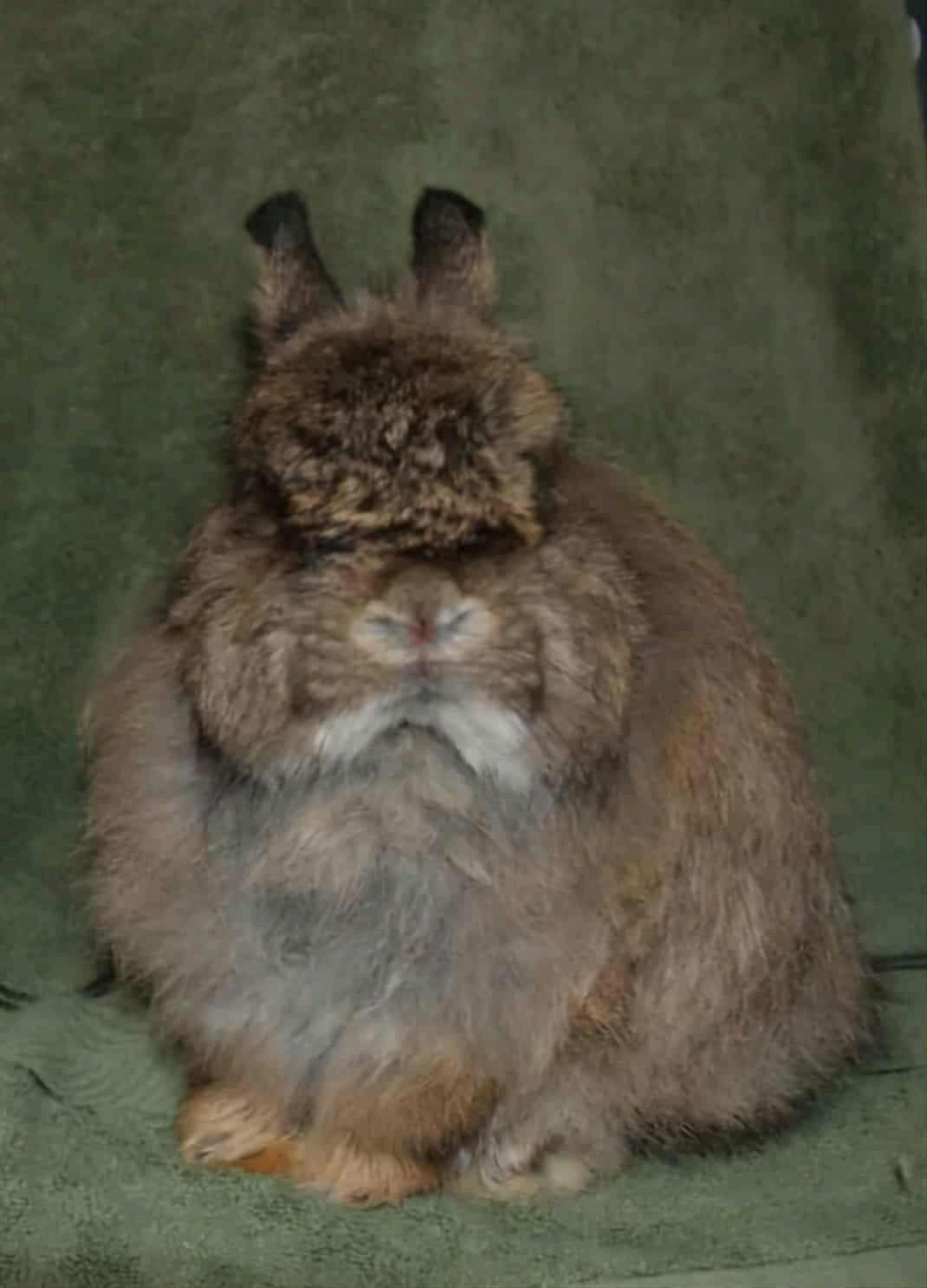
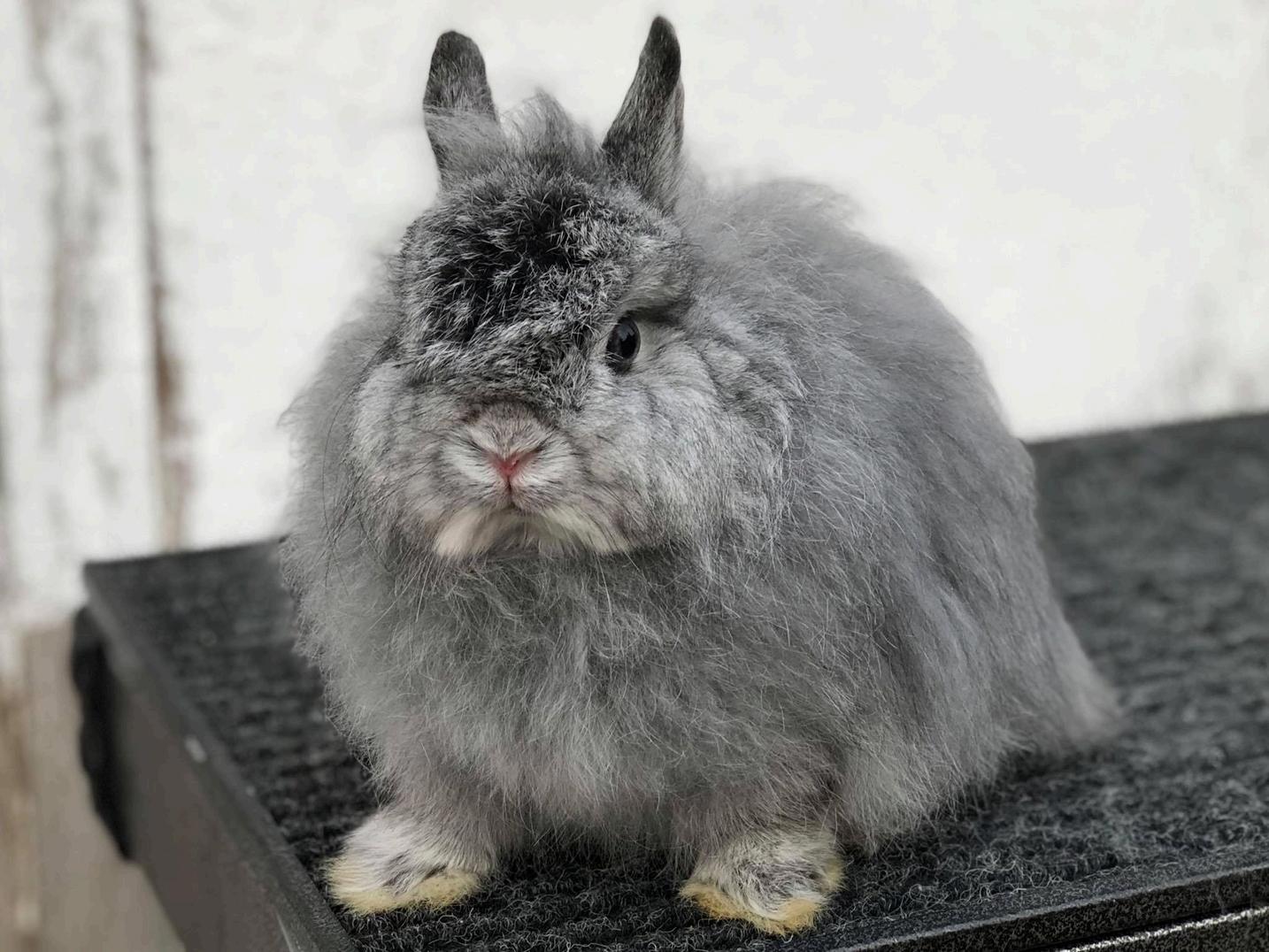
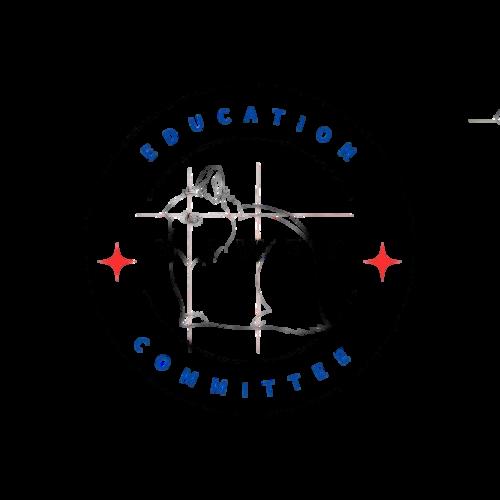
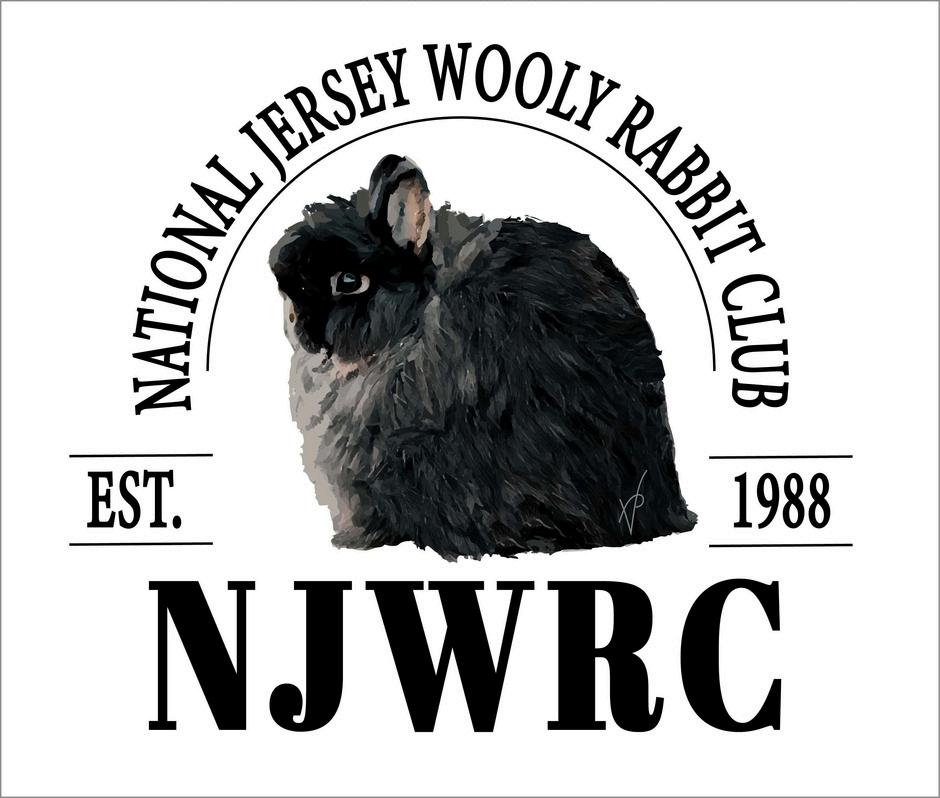







Agouti Pattern- A hair shaft that has three or more bands of color. It usually has a dark slate at the base, with two or more alternating light or dark bands of color, which are further interspersed with contrasting guard hairs. The head, feet, and ears usually have ticking.
All Varieties are to have “Agouti Pattern Markings” in the following areas: Nostrils, eye circles, jowls, inside of ears, belly, inside of legs, underside of tail, triangle, and do not carry ticking. The belly and insides of the legs are to have a slate under-color unless noted otherwise. Lap marks are permissible.
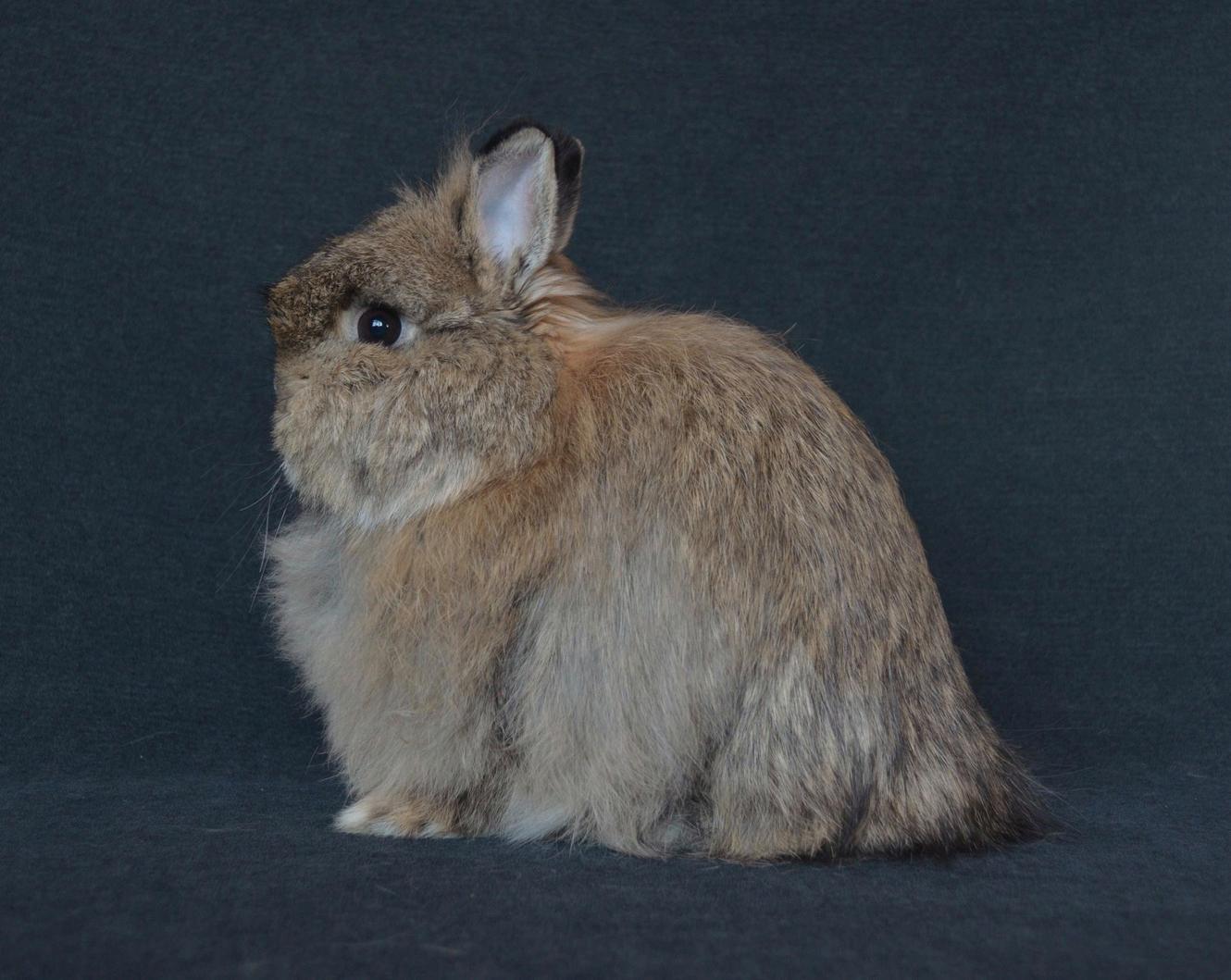
FAULTS: Surface color that is too light or too dark. Fault severely for poor ring definition or a very faded orange band.
DQs: Lack of slate under-color, lack of lacing or ear lacing other than black, surface ticking any color other than black.
Common Problems: Faded or muddy intermediate band, poor ring pattern, and soft coat.
NOTE: Anything with chocolate will affect ring color.
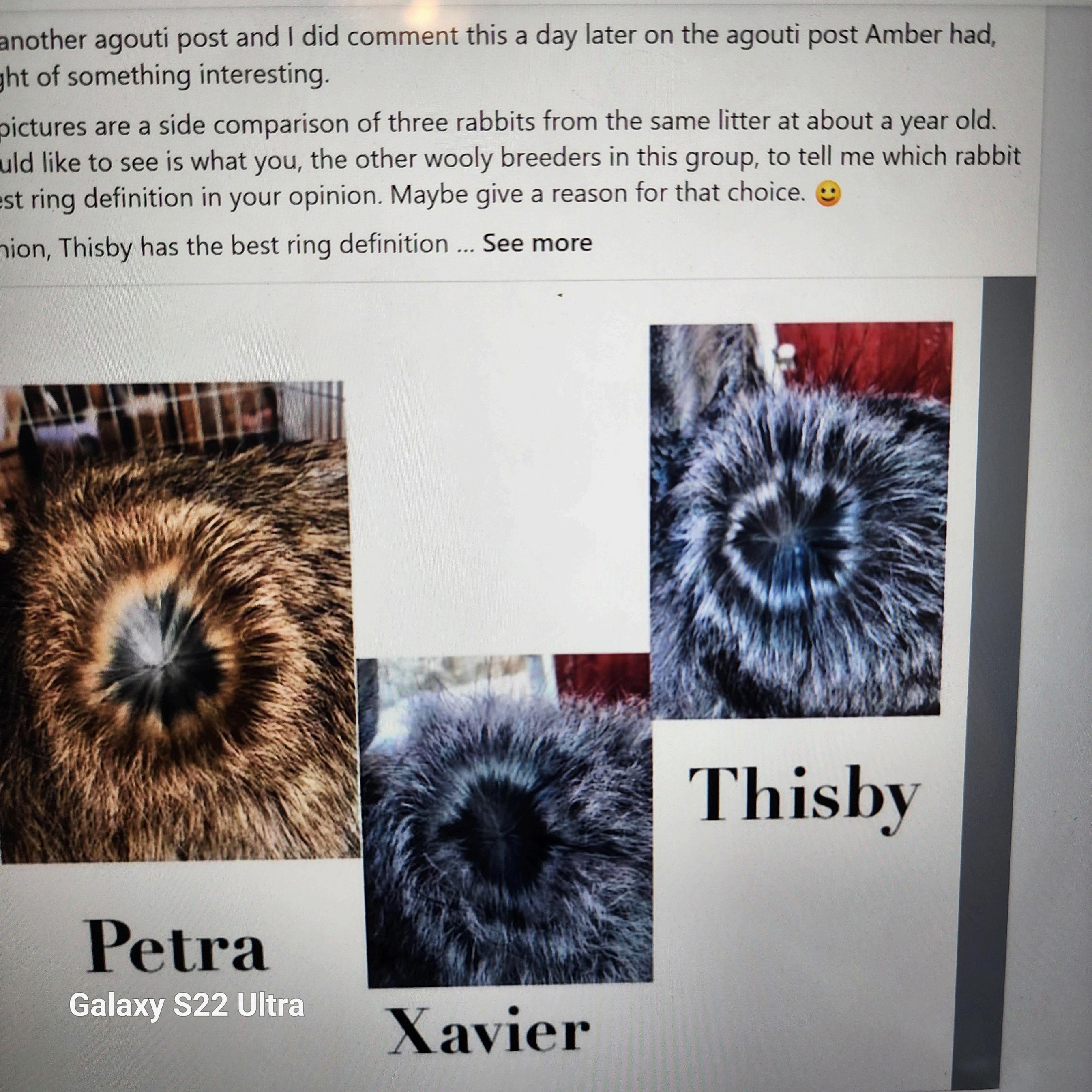

CHESTNUT: The surface color of the body is to be evenly distributed chestnut brown, tipped with jet black. The intermediate band is to be orange over a band of slate blue under-color. Surface color of the belly is to be white to creamy tan, clearly defined over a slate blue under-color. The chest, head, outside of ears, and upper side of tail are to match the body surface color. Ears are to be laced in black. The triangle, behind the ears, is to be orange over a slate blue under-color. Eye circles, nostrils, and jowls are to be white to creamy tan. Surface color on the underside of the tail is to match the surface color of the belly. Eyes- Brown.
Recommended colors to breed: REW, Chestnut, Opal, Chinchilla, Squirrel, Orange, Black or Blue (that does not carry shaded), Black or Blue Otter (that does not carry shaded).
National Jersey Wooly Rabbit Club, Inc.
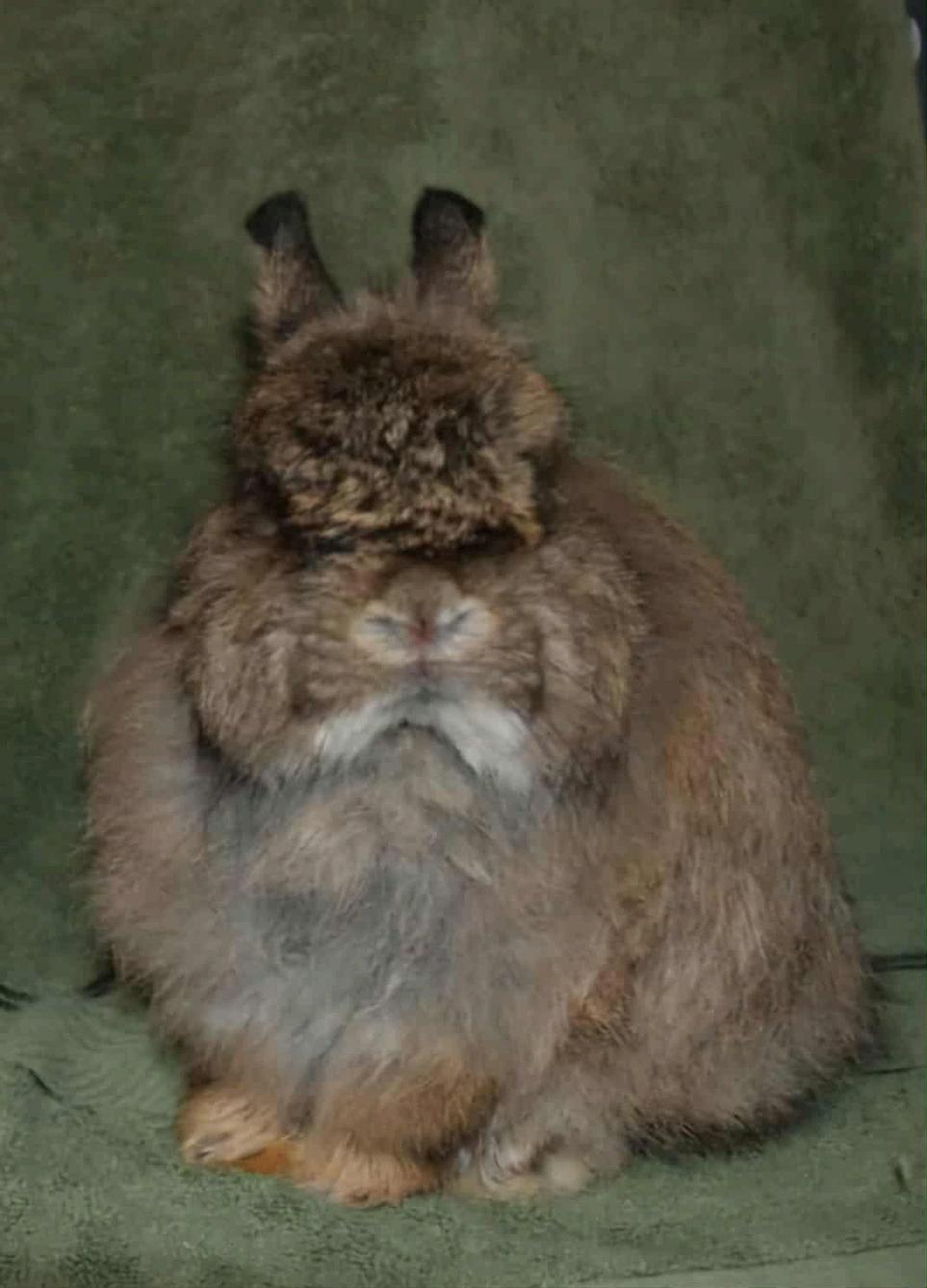
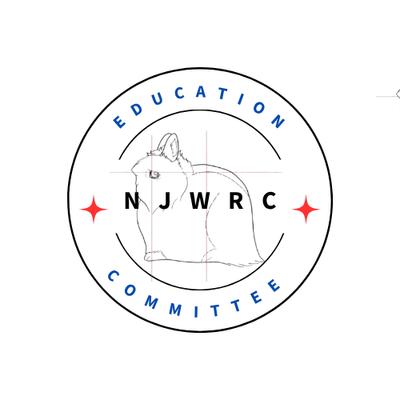

Agouti pattern- A hair shaft that has three or more bands of color. It usually has a dark slate at the base, with two or more alternating light or dark bands of color, which are further interspersed with contrasting guard hairs. The head, feet, and ears usually have ticking.
All Varieties are to have “Agouti Pattern Markings” in the following areas: Nostrils, eye circles, jowls, inside of ears, belly, inside of legs, underside of tail, triangle, and do not carry ticking . The belly and insides of the legs are to have a slate under-color unless noted otherwise. Lap marks are permissible.
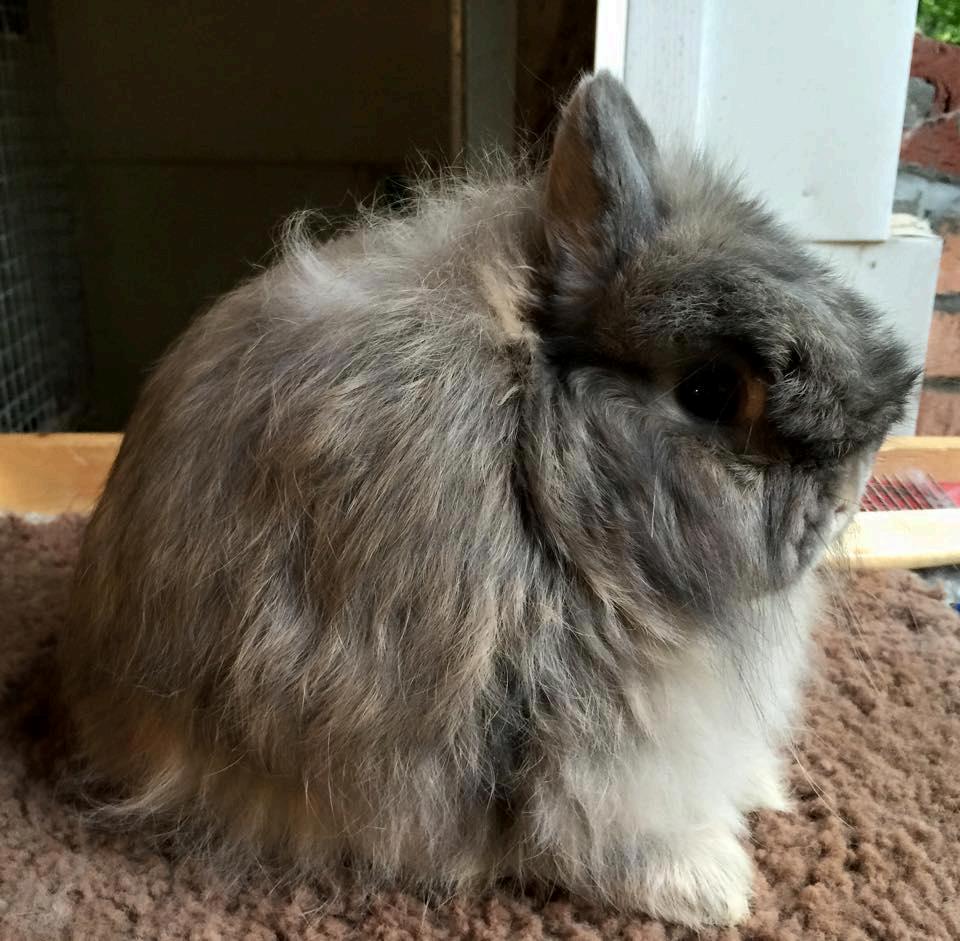
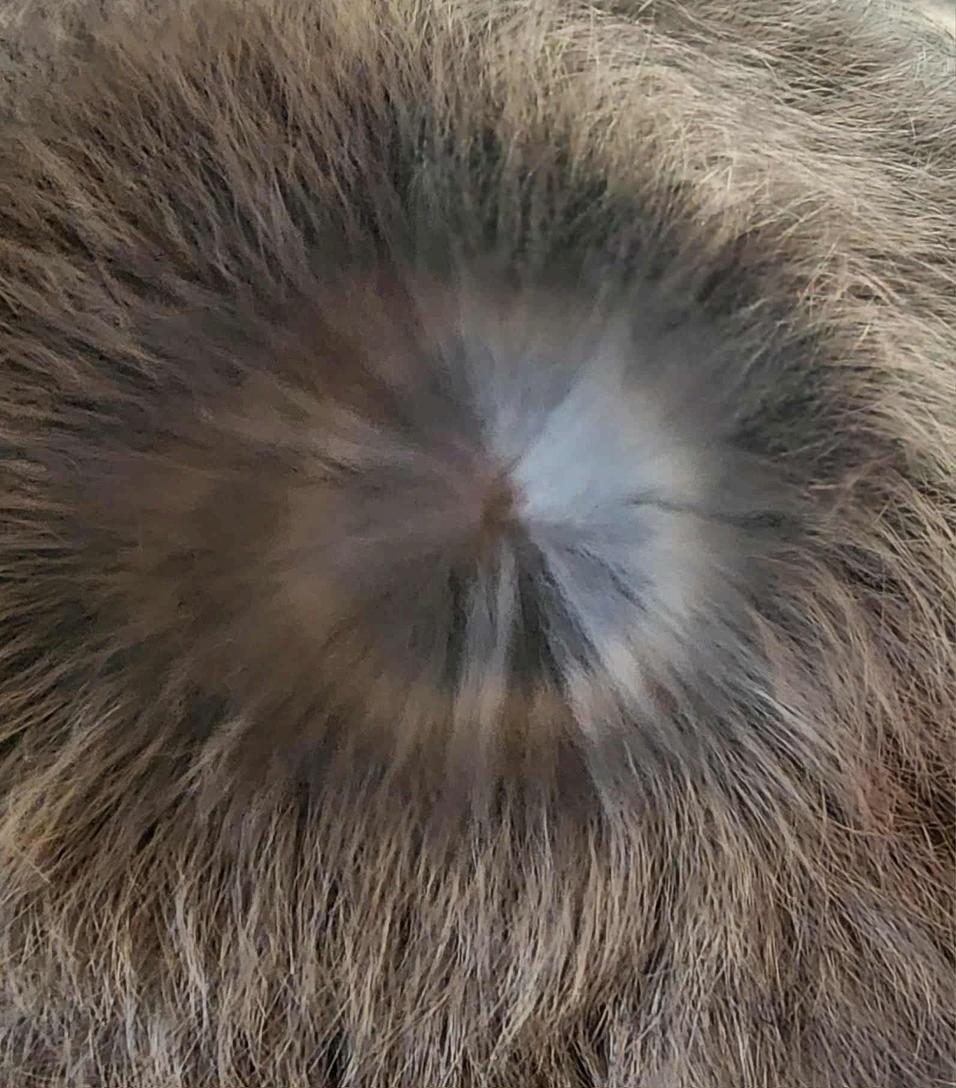
OPAL-The surface color of the top and sides of the body is to be a rich medium blue. The intermediate color is to be fawn, clearly defined over a slate blue under-color. The upper side of the tail is to be blue, sparsely ticked with fawn, over a slate blue undercolor. The eye circles, the jowls, the inside of the ears, and the underside of the tail are to be white or creamy tan colored. The triangle is to be fawn with a slate blue under-color. The surface color of the belly is to be white or creamy tan over a slate blue under-color. Eyes- Blue Gray
Faults-Surface color that is too light, uneven, or faded in appearance. Fault severely for poor ring color.
DQ: Failure to show fawn intermediate ring color; lack of slate under-color.
Common problems: wrong under-color, mismatched toenails, faded or muddy intermediate band, poor ring pattern, and soft coat.
NOTE: Anything with chocolate will affect ring color.
Recommended colors to breed: REW, Chestnut, Chinchilla, Black (that does not carry shaded), Black Otter (that does not carry shaded).
National Jersey Wooly Rabbit Club, Inc. Learn more about the Jersey Wooly at: jerseywooly.org
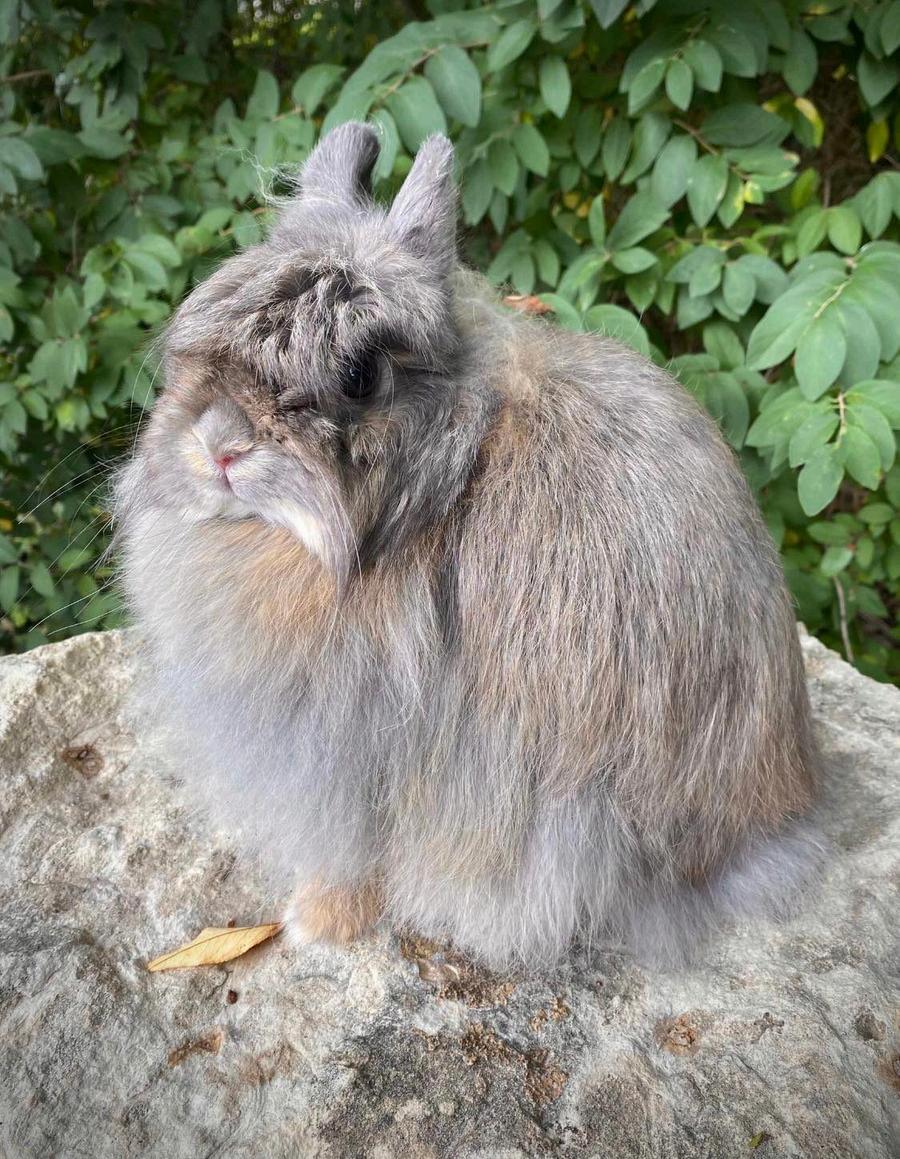



Agouti pattern- A hair shaft that has three or more bands of color. It usually has a dark slate at the base, with two or more alternating light or dark bands of color, which are further interspersed with contrasting guard hairs. The head, feet, and ears usually have ticking.
All Varieties are to have “Agouti Pattern Markings” in the following areas: Nostrils, eye circles, jowls, inside of ears, belly, inside of legs, underside of tail, triangle, and do not carry ticking. The belly and insides of the legs are to have a slate under-color unless noted otherwise. Lap marks are permissible.
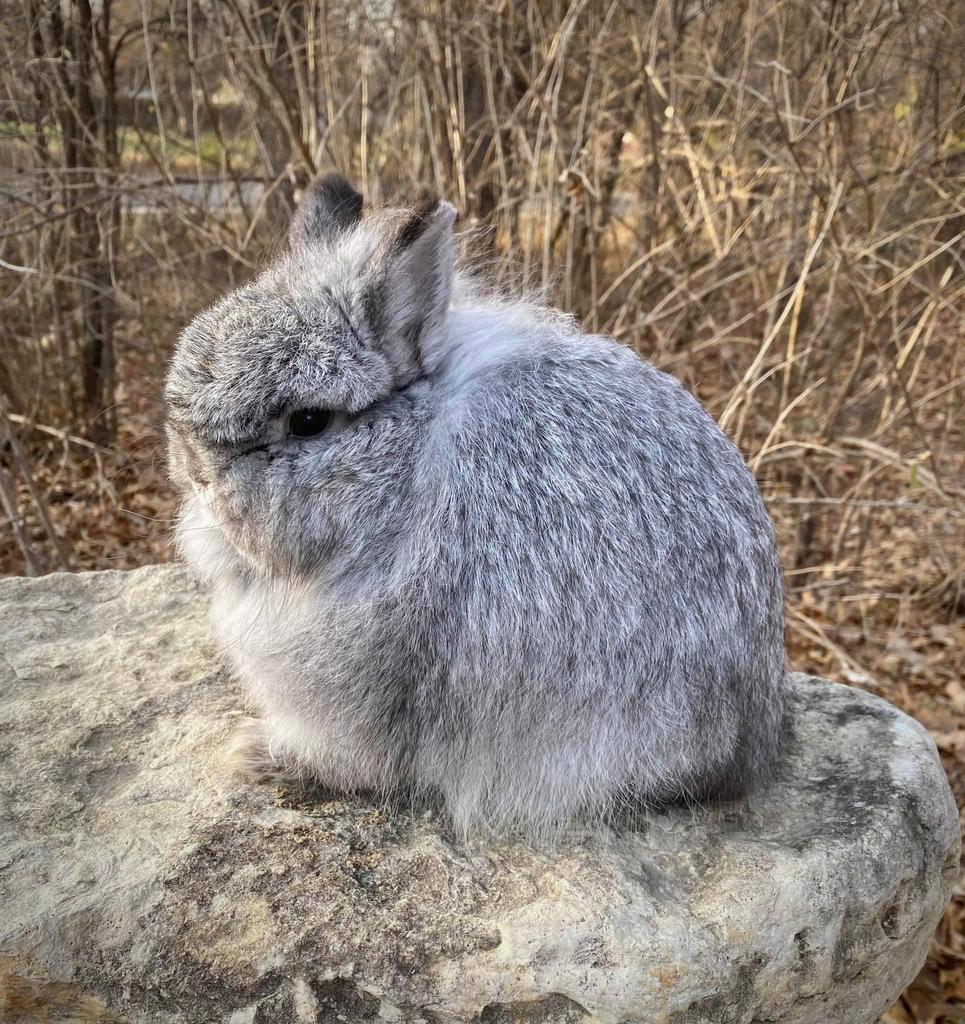
CHINCHILLA: The surface color of the body is to be an evenly distributed blend of black, and pearl, lightly tipped with black. The intermediate band color is to be pearl clearly defined over a band of slate blue under-color. Surface color of the belly is to be white to pearl, clearly defined over slate blue under-color. The triangle, behind the ears, is to be white over a slate blue under-color. The chest, head, outside of ears, and upper side of tail are to match the body surface color. Ears are to be laced in black. Eye circles, nostrils, and jowls are to be pearl. Surface color on the underside of the tail is to match surface color of the belly. Eyes-brown, blue-gray, marbled.
Faults-Fault severely for poor ring definition, or lack of black surface ticking. Surface color that is too light, too dark, or uneven.
DQ Lack of slate under-color; lack of ear lacing; ear lacing other than black; surface color other than black. Brownish tinge to the color.
Common problems: Brown tinge to coat, too light, in color, poor ring pattern, and soft coat. Note: Be careful of breeding chestnuts that carry chocolate or non-extension
Recommended colors to breed: Chestnut (that does not carry chocolate or non extension), Squirrel, Black or Blue Otter that do not carry shaded. Black or Blue Silver Marten.

National Jersey Wooly Rabbit Club, Inc. Learn more about the Jersey Wooly at:


Agouti pattern- A hair shaft that has three or more bands of color. It usually has a dark slate at the base, with two or more alternating light or dark bands of color, which are further interspersed with contrasting guard hairs. The head, feet, and ears usually have ticking.
All Varieties are to have “Agouti Pattern Markings” in the following areas: Nostrils, eye circles, jowls, inside of ears, belly, inside of legs, underside of tail, triangle, and do not carry ticking. The belly and insides of the legs are to have a slate under-color unless noted otherwise. Lap marks are permissible.
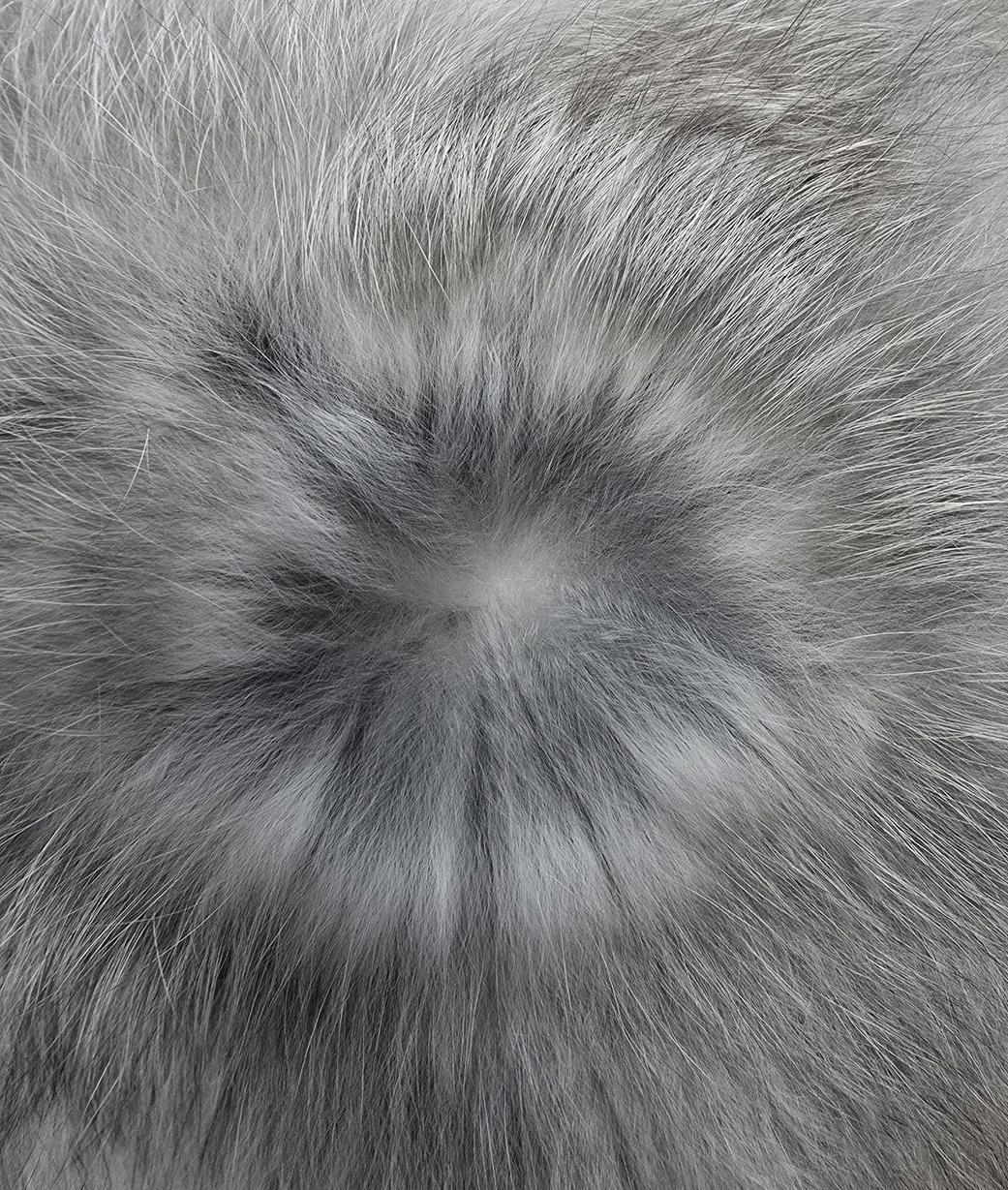
SQUIRREL-The surface color of the body is to be an evenly distributed blend of blue and light pearl that is lightly tipped in blue. The intermediate band color is to be light pearl defined over a band of slate blue undercolor. Surface color of the belly is to be light pearl to white, over a blue-gray under-color. The triangle, behind the ears, is to be white with a slate under-color. The chest, head, outside of ears, and upper side of tail are to match the body surface color. Ears are to be laced in blue. Eye circles, nostrils, and jowls are to be light pearl. Surface color on the underside of the tail is to match surface color of the belly. Eyes-Brown, Blue-gray, Marbled.
Faults: Extremely light surface color. Fault severely for poor ring definition.
DQ- Absence of ring color, brown tinge, lack of ear lacing, or ear lacing any color other than blue.

Common Problems: Poor ring pattern, brown tinge to coat, too light in appearance, and soft coat. No Belly color
Recommended colors to breed: Chestnut, Chinchilla, Black Otter (that does not carry shaded), and Black Silver Marten.
National Jersey Wooly Rabbit Club, Inc. Learn
